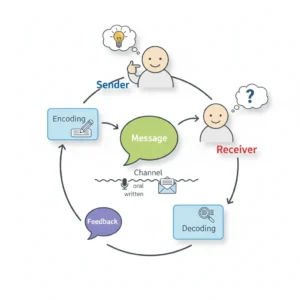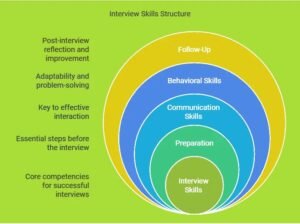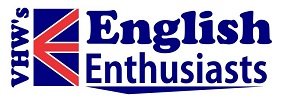Elevate Your Communication: Parts of Speech Decoded
Welcome to the fascinating world of English grammar! At the heart of our language lies a fundamental concept: The Parts of Speech in English with Examples. These building blocks of communication help us construct meaningful sentences and express our thoughts clearly. Whether you’re a student, a writer, or simply someone looking to improve your language skills, understanding the eight parts of speech is crucial. In this blog post, we’ll explore nouns, pronouns, verbs, adjectives, adverbs, prepositions, conjunctions, interjections, and articles. We’ll break down each category with clear definitions and engaging examples, showing you how these versatile word classes work together to create the rich tapestry of the English language. So, let’s dive in and unravel the mysteries of parts of speech together!
1. Nouns (dog, city, happiness) 2. Pronouns (he, she, it) 3. Verbs (run, jump, think) 4. Adverbs (quickly, loudly, wisely) 5. Adjectives (happy, blue, big) 6. Prepositions (in, on, under) 7. Conjunctions (and, but, or) 8. Interjections (Oh!, Wow!, Ouch!) 9. Articles (the, a, an)

This sequence of parts of speech is often remembered using the acronym “NAVPAAPI” or phrases like “Nancy Always Pronounces Adjectives And Pronouns Incorrectly.”
1. NOUN
The first parts of speech is Noun. A noun is a word that refers to a person, place, thing, idea, or quality. It’s a fundamental part of language, helping us identify and communicate about the world around us.
Types of Nouns:
1. Proper Nouns: Specific, unique entities (e.g. Vaibhav, Barshi, Google)
2. Common Nouns: General terms (e.g., dog, city, company)
3. Collective Nouns: Groups of people, animals, or things (e.g., family, herd, team)
4. Abstract Nouns: Intangible concepts (e.g., happiness, freedom, love)
5. Concrete Nouns: Tangible objects (e.g., book, chair, apple)
Characteristics of Nouns:
1. Refers to a person, place, thing, or idea
2. Can be singular or plural
3. Can be modified by adjectives
4. Can function as subjects, objects, or complements in sentences
Examples:
1. Person: teacher, student, president
2. Place: park, library, city
3. Thing: book, chair, phone
4. Idea: happiness, freedom, justice
5. Quality: beauty, kindness, intelligence
Nouns can also be classified as:
1. Countable (e.g., one book, two dogs)
2. Uncountable (e.g., water, happiness)
3. Concrete (e.g., chair, apple)
4. Abstract (e.g., love, freedom)
In sentences, Nouns can function as:
1. Subjects (e.g., The dog runs.)
2. Objects (e.g., I threw the ball.)
3. Complements (e.g., She is a doctor.)
Understanding nouns helps us build strong foundations in language and communication.
Proper Noun
A proper noun is a type of noun that refers to a specific, unique entity, such as a person, place, organization, or title. Proper nouns are always capitalized to distinguish them from common nouns.
Examples of Proper Nouns:
1. Names of People: Vaibhav, Ganesh, Sagar
2. Places: Bhagwant Temple, London Palace, Mount Everest
3. Countries: India, America, China, Australia
4. Cities: Solapur, Mumbai, Tokyo, Paris
5. Organizations: Google, NASA, United Nations
6. Historical Events: World War II, Renaissance
7. Holidays: Christmas, Diwali, Halloween
8. Titles: Mr., Mrs., Dr., President
9. Brands: Apple, Nike, Coca-Cola
10. Specific Dates: September, 19, 2024, Independence Day
Characteristics of Proper Nouns:
1. Unique Reference: refers to one specific entity
2. Capitalized: always written with a capital letter
3. Specificity: distinguishes from common nouns
4. Non-countable: often can’t be counted (e.g. Google)
Examples of Proper Nouns in Sentences:
1. Vaibhav lives in Barshi. (person and place)
2. The United Nations is headquartered in Geneva. (organization)
3. Apple released a new iPhone. (brand)
To identify Proper Nouns, ask:
1. Is it a specific, unique entity? (yes)
2. Is it capitalized? (yes)
3. Does it refer to a particular person, place, or organization? (yes)
Proper nouns provide clarity and precision in communication, helping us identify specific individuals, locations, and entities.
Common Nouns
A common noun is a noun that refers to a general category or class of people, places, things, or ideas. It is not specific or unique, and it can be used to describe any member of that category.
Examples of Common Nouns:
– Animal
– City
– Teacher
– Book
– Tree
– Car
Common Nouns are contrasted with:
– Proper Nouns: Specific, unique names (John, London, Google)
– Collective Nouns: Groups of people, animals, or things (family, team, flock)
– Abstract Nouns: Concepts or ideas (happiness, freedom, love)
Common Nouns can be classified further into:
– Concrete Nouns: Tangible objects (chair, apple, dog)
– Abstract Nouns: Intangible concepts (happiness, justice, beauty)
Collective Nouns
A collective noun is a noun that refers to a group of people, animals, or things. It is a single word that represents a collection or gathering of multiple individuals or items.
Examples of Collective Nouns:
People:
1. Family
2. Team
3. Committee
4. Crowd
5. Audience
Animals:
1. Herd (cattle, elephants)
2. Flock (birds, sheep)
3. School (fish)
4. Pack (wolves, dogs)
5. Gaggle (geese)
Things:
1. Bunch (grapes, flowers)
2. Stack (books, boxes)
3. Collection (art, stamps)
4. Series (lectures, concerts)
5. Array (computers, solar panels)
Special Collective Nouns:
1. A pride of lions
2. A murder of crows
3. A troop of monkeys
4. A school of sharks
5. A fleet of ships
Collective Nouns can be classified into:
1. Concrete collective nouns (group of people, animals)
2. Abstract collective nouns (ideas, concepts)
When using Collective Nouns:
– Use singular verb forms for collective nouns that act as a single unit.
– Use plural verb forms when emphasizing individual members.
Abstract Noun
An abstract noun is a type of noun that represents an intangible concept, feeling, or idea, rather than a physical object or concrete thing. Abstract nouns can’t be perceived through our senses (sight, sound, touch, taste, smell), but they exist as mental or emotional constructs.
Examples of Abstract Nouns:
1. Emotions: happiness, sadness, love, anger
2. Concepts: freedom, justice, equality, democracy
3. Ideas: thought, imagination, creativity
4. Qualities: beauty, kindness, intelligence, honesty
5. Events: marriage, graduation, birthday
6. States: peace, war, chaos, harmony
7. Conditions: health, sickness, poverty, wealth
8. Relationships: friendship, family, partnership
9. Feelings: excitement, boredom, curiosity
10. Philosophical Concepts: time, space, destiny
Characteristics of Abstract Nouns:
1. Intangible: can’t be touched or seen
2. Non-concrete: doesn’t have physical existence
3. Conceptual: exists as an idea or notion
4. Non-countable: often can’t be counted (e.g. happiness)
Abstract Nouns often:
1. End in -ion, -ment, -ness, -ship, or -ty (e.g. education, development, happiness)
2. Are modified by adjectives (e.g. profound sadness)
3. Function as subjects, objects, or complements in sentences
To identify Abstract Nouns, ask:
1. Can it be seen or touched? (no)
2. Is it an idea or concept? (yes)
3. Does it evoke emotion or thought? (yes)
Abstract Nouns enrich language, enabling us to express complex thoughts, emotions, and ideas.
Concrete Noun
A concrete noun is a noun that refers to a tangible, physical object or substance that can be perceived through our senses (sight, touch, taste, smell, or hearing). Concrete nouns represent objects or things that have a physical existence.
Examples of Concrete Nouns:
1. Animal: dog, cat, elephant
2. Food: apple, pizza, sushi
3. Objects: chair, book, phone
4. Places: park, city, beach
5. Vehicles: car, bike, airplane
6. Body Parts: hand, eye, hair
7. Natural Objects: river, mountain, sunflower
Characteristics of Concrete Nouns:
1. Tangible: can be touched or held
2. Visible: can be seen
3. Specific: refers to a specific object or thing
4. Physical Properties: has shape, size, color, texture
Concrete Nouns are contrasted with:
1. Abstract Nouns: intangible concepts (happiness, freedom, love)
2. Collective Nouns: groups of people, animals, or things (family, team, flock)
To identify concrete nouns, ask . . .
1. Can I touch or hold it?
2. Can I see it?
3. Does it have physical properties?
If yes, it’s likely a concrete noun!
Pronouns
The second parts of speechis Pronoun. A pronoun is a word that replaces a noun or noun phrase in a sentence, making it shorter and clearer. Pronouns refer to a person, place, thing, or idea without repeating the noun.
Types of pronouns:
1. Personal Pronouns: I, you, he, she, it, we, they
2. Possessive Pronouns: mine, yours, his, hers, its, ours, theirs
3. Reflexive Pronouns: myself, yourself, himself, herself, itself, ourselves, themselves
4. Demonstrative Pronouns: this, that, these, those
5. Interrogative Pronouns: who, what, which, whom, whose
6. Indefinite Pronouns: someone, anyone, nobody, all, few, many
7. Relative Pronouns: who, which, that, whom, whose
8. Reciprocal Pronouns each other, one another
Examples:
– I (personal) instead of “Vaibhav” in “I am going.”
– My book (possessive) instead of “Vaibhav’s book.”
– Himself (reflexive) in “He hurt himself.”
– This (demonstrative) in “This is my car.”
– Who (interrogative) in “Who is there?”
– Someone (indefinite) in “Someone is coming.”
– Who (relative) in “The person who called is my friend.”
Pronouns:
– Simplify sentences
– Avoid repetition
– Improve clarity
– Show relationships
When using pronouns:
– Ensure clarity: Make sure the pronoun’s antecedent (referenced noun) is clear.
– Use correct forms: Personal, possessive, reflexive, etc.
– Avoid ambiguity: Use pronouns precisely.
Verb
The third parts of speech is Verb. A verb is a word that expresses:
1. Action (run, jump, think)
2. State (be, have, belong)
3. Occurrence (happen, occur, exist)
4. Event (start, finish, celebrate)
5. Condition (seem, appear, feel)
Verbs are essential for sentence structure, conveying what is happening, has happened, or will happen.
Types of verbs:
1. Action verbs (dynamic): run, dance, write
2. Linking verbs (static): be, seem, appear
3. Helping verbs (auxiliary): will, would, shall
4. Transitive verbs: take an object (eat, buy, read)
5. Intransitive verbs: no object (sleep, laugh, cry)
6. Regular verbs: follow predictable patterns (-ed, -ing)
7. Irregular verbs: unpredictable patterns (go -> went)
Verb forms:
1. Base form (run)
2. Past tense (ran)
3. Past participle (run)
4. Present participle (running)
5. Infinitive (to run)
Verb tenses:
1. Present (I run)
2. Past (I ran)
3. Future (I will run)
4. Past perfect (I had run)
5. Future perfect (I will have run)
Verbs help to:
– Express time and aspect
– Show cause and effect
– Indicate possibility or certainty
– Connect ideas
When using verbs:
– Choose the correct tense
– Ensure subject-verb agreement
– Use active or passive voice
Adverb
The fourth parts of speech is Adverb. An adverb is a word that modifies:
1. Verbs (quickly, loudly, wisely)
2. Adjectives (very, extremely, highly)
3. Other adverbs (quite, almost, nearly)
Adverbs provide additional information about:
1. Manner (how): quickly, carefully
2. Time (when): yesterday, soon
3. Place (where): here, everywhere
4. Frequency (how often): often, rarely
5. Degree (to what extent): very, extremely
Types of adverbs:
1. Adverbs of Manner: describe how (quickly, wisely)
2. Adverbs of Time: describe when (yesterday, soon)
3. Adverbs of Place: describe where (here, everywhere)
4. Adverbs of Frequency: describe how often (often, rarely)
5. Adverbs of Degree: describe extent (very, extremely)
6. Interrogative Adverbs: ask questions (how, when, where)
7. Relative Adverbs: introduce clauses (where, when, why)
Examples:
– She sings beautifully. (manner)
– We’ll arrive tomorrow. (time)
– The park is nearby. (place)
– I rarely eat dessert. (frequency)
– He’s extremely happy. (degree)
Adverbs help to:
– Clarify meaning
– Provide context
– Show relationships
– Add emphasis
When using adverbs:
– Place them near the modified verb
– Avoid overusing adverbs
– Choose precise adverbs
Common adverb endings:
– -ly (quickly, wisely)
– -wise (clockwise, otherwise)
– -ward (forward, backward)
Adjective
The fifth parts of speech is Adjective. An adjective is a word that modifies, describes, or characterizes:
1. Nouns (the big house)
2. Pronouns (the happy ones)
3. Other nouns or pronouns implied (the best solution)
Adjectives provide information about:
1. Quality (good, happy, beautiful)
2. Quantity (many, few, much)
3. Size (big, small, tall)
4. Shape (round, square, rectangular)
5. Color (red, blue, green)
6. Origin (American, British, Japanese)
7. Material (wooden, metal, silk)
Types of Adjectives:
1. Quantitative: describe amount (many, few)
2. Qualitative: describe characteristics (happy, beautiful)
3. Demonstrative: point out specific nouns (this, that)
4. Interrogative: ask questions (which, what)
5. Possessive: show ownership (my, your)
6. Comparative: compare qualities (bigger, happier)
7. Superlative: describe extremes (biggest, happiest)
Examples:
– The delicious cake. (quality)
– The five books. (quantity)
– The large room. (size)
– The round Earth. (shape)
– The blue sky. (color)
Adjectives:
– Clarify meaning
– Add detail
– Create vivid images
– Help comparisons
When using adjectives:
– Place them before nouns
– Use precise adjectives
– Avoid overusing adjectives
Some common adjective forms:
– Prefixes (unhappy, re-new)
– Suffixes (-ful, -less)
– Compound adjectives (full-time, well-known)
Preposition
The sixth parts of speech is Preposition. A preposition is a word that shows the relationship between:
1. Nouns or pronouns
2. Verbs or verb phrases
Prepositions indicate:
1. Location (in, on, under)
2. Direction (to, from, up)
3. Time (at, during, before)
4. Manner (by, with, in)
5. Position (above, below, beside)
6. Movement (into, out of, through)
7. Relationship (of, with, between)
Common Prepositions:
1. Words of Location: in, on, at, by, with
2. Words of Direction: to, from, up, down, out
3. Words of Time: at, during, before, after
4. Words of Movement: into, out of, through, across
5. Words of Manner: by, with, in
Examples:
– The book is on the table. (location)
– I’m going to the store. (direction)
– We’ll meet at 5 pm. (time)
– She sings with a beautiful voice. (manner)
– The picture is above the couch. (position)
Prepositions help to:
– Show relationships
– Indicate location and direction
– Clarify meaning
– Connect ideas
When using Prepositions:
– Choose the correct preposition
– Use prepositions to connect phrases
– Avoid unnecessary prepositions
Some common Preposition combinations:
– Phrasal verbs (pick up, get on)
– Idiomatic expressions (in advance, on time)
– Prepositional phrases (in the morning, with a smile)
Conjunction
The seventh parts of speech is Conjuntion. A conjunction is a word that connects:
1. Words
2. Phrases
3. Clauses
Conjunctions link ideas, showing:
1. Addition (and, also)
2. Contrast (but, however)
3. Alternative (or, otherwise)
4. Time (then, meanwhile)
5. Cause and effect (so, therefore)
6. Condition (if, unless)
Types of conjunctions:
1. Coordinating conjunctions: connect equal elements
– And (I like reading and writing)
– But (I wanted to go, but I stayed)
– Or (Do you want coffee or tea?)
– So (I’m tired, so I’ll rest)
1. Subordinating Conjunctions: connect dependent and independent clauses
– Because (I stayed because I was tired)
– Since (I’ve been busy since morning)
– After (I’ll go after I finish)
– Although (I’ll go although it’s raining)
1. Correlative conjunctions: used in pairs
– Both…and (I like both coffee and tea)
– Either…or (Either we go now or we’ll be late)
– Not only…but also (I not only read but also write)
Conjunctions:
– Clarify relationships
– Connect ideas
– Show contrast or addition
– Improve sentence structure
When using conjunctions:
– Choose the correct type
– Ensure proper punctuation
– Avoid overusing conjunctions
Some common conjunction errors:
– Comma joints
– Run-on sentences
– Inconsistent conjunction usage
Interjection
The eighth parts of speech is Interjection. An interjection is a word or phrase that expresses:
1. Emotion (oh, wow, ouch)
2. Feeling (ah, yuck, yay)
3. Reaction (oh no, wow, ouch)
Interjections:
– Convey strong emotions
– Add emphasis
– Create tone
– Interrupt or respond
Types of interjections:
1. Primary Interjections: solely expressive (oh, ah, ouch)
2. Secondary Interjections: derived from other words (good grief, great Scott)
Examples:
– Wow, that’s amazing! (surprise)
– Ouch, that hurts! (pain)
– Yay, I’m so happy! (joy)
– Oh no, I forgot! (disappointment)
Interjections:
– Begin sentences (Wow, that’s beautiful!)
– Stand alone (Ouch!)
– Follow exclamatory marks (!)
When using Interjections:
– Use sparingly for emphasis
– Choose authentic expressions
– Consider tone and audience
Some common Interjections:
– Greetings (hello, goodbye)
– Expressions of surprise (wow, oh)
– Emotions (yay, ouch, ah)
– Reactions (oh no, yes)
Article
‘Article’ is not typically considered a separate part of speech in traditional English grammar. However, articles are a type of word that falls under a broader part of speech.
Articles (“a,” “an,” and “the”) are actually classified as a type of determiner. Determiners are words that introduce nouns and provide context about which specific thing is being referred to.
The traditional parts of speech in English are only eight.
Some modern grammarians and linguists include determiners as a ninth part of speech, which would encompass articles. However, in many traditional grammar systems, articles are often grouped with adjectives since they modify nouns.
It’s worth noting that the classification of parts of speech can vary somewhat depending on the grammatical framework being used. Some more detailed systems might list articles separately, but this is not the most common approach in standard English grammar.
An article is a word that modifies a noun by providing information about its:
1. Definiteness (the, a, an)
2. Indefiniteness (a, an)
3. Uniqueness (the)
Types of Articles:
1. Definite Article: “the” (specific, previously mentioned)
– The book on the table.
1. Indefinite Articles:
– “a” (singular, non-specific)
– A book is on the table.
– “an” (singular, non-specific, begins with vowel sound)
– An apple is healthy.
Articles help to:
– Clarify noun references
– Indicate specificity
– Show familiarity
– Improve sentence structure
When using Articles:
– Use “the” for specific, previously mentioned nouns
– Use “a/an” for non-specific, singular nouns
– Omit articles for plural, non-specific nouns
– Consider context and idiomatic expressions
Some common Article usage:
– Unique objects (the Sun, the Earth)
– Specific locations (the park, the library)
– Organizations (the FBI, the UN)
– Titles (the President, the Queen)
Exceptions:
No article for:
– Plural, non-specific nouns (cats, books)
– Abstract nouns (happiness, freedom)
– Proper nouns (John, London)

Unit 1: Basics of Communication
Oliver Goldsmith’s The Village Schoolmaster is a nostalgic and detailed character sketch that blends humour, admiration, and poignant reflection on the passage of time.
AEC Sem-I English for Communication
Syllabus English for Communication (AEC) Unit 1: Basics of CommunicationUnit 2: Oral Communication2.1 Interview Skills2.2 Group Discussion

BA Sem-III [AEC] [MIL] Reading Texts in Indian English–I
Oliver Goldsmith’s The Village Schoolmaster is a nostalgic and detailed character sketch that blends humour, admiration, and poignant reflection on the passage of time.
AEC Sem-II English for Communication
Syllabus English for Communication (AEC) Unit 1 : Listerning Skillsa. Listening Processb. Types of Listeningc. Improving Listening Skills / Listening Carefullyd. English Tones: Rising, Falling

Interview Skills
Oliver Goldsmith’s The Village Schoolmaster is a nostalgic and detailed character sketch that blends humour, admiration, and poignant reflection on the passage of time.

[AEC] [MIL] Reading Texts in Indian English–I
SyllabusB.A. English Part-IISemester- III[AEC] [MIL]Reading Texts in Indian English–I UNIT Description I Poetry:1. Goodbye Party for Miss Pushpa T.S.: Nissim Ezekiel2. Pilgrimage: Shiv K. Kumar3.

Keep it up Doctor….👍
Very useful to students as well as teachers.
👍
Well done sir
Wonderful job…
Good job. Very useful
Very easy to understand
The information disseminated through your blog will surely help the students in their academic work
Creative idea & information
Excellent
Awesome explanation sir 👍
Awesome explanation great work sir 👍
Very helpful information for new learners and you have made it simple and interesting.
New concepts awaited for learners …
Done
Very nice 👌
Dr.Vaibhav Waghmare
It’s very useful to understand parts of speech
I love this part
Very useful information
Thank you sir for your time and efforts.
“Thank you for providing invaluable insights into English grammar. Your explanations were clear and concise.”
A very good initiative. It is helpful for students as well as teachers. Thank you.
Aajacha part of speech chhan hota mala send karta ka keep it up 👍👍
Sure
Very nice Daji
Great work sir
Excellent data
Very nice info in simple words and precise words
👍
You are doing excellent work Sirji
Fantastic… Will be helpful for students as well as teachers.. Great info…
Great work sir
Very useful information
Thank you very much 🙏
Great work sir
Very useful information
Thank you very much🙏🙏👍
Very nice info in simple words Sir 🌹🙏💐
Very nice sir👍
You reminded me of my college studies by sending these notes and your notes are always helpful so thank you for that Sir ji.
Good information about parts of speech.In simple and easy way.Keep it up.Thanks a lot.
Very good information 👍
Really inquisitive work keep it up
Very nice information sir
Nice article!!! Good work. Really helpful.
Thank you
Very good information sir
Thank you sir
Good job Sir.
Very useful information.
More and more information with data